Aquatic Botany Quiz 1
1/39
There's no tags or description
Looks like no tags are added yet.
Name | Mastery | Learn | Test | Matching | Spaced |
|---|
No study sessions yet.
40 Terms
True or False: Algae conduct ~50% of aquatic carbon fixation, and angiosperms do the other 50%
True, algae and angiosperms are the primary C fixers
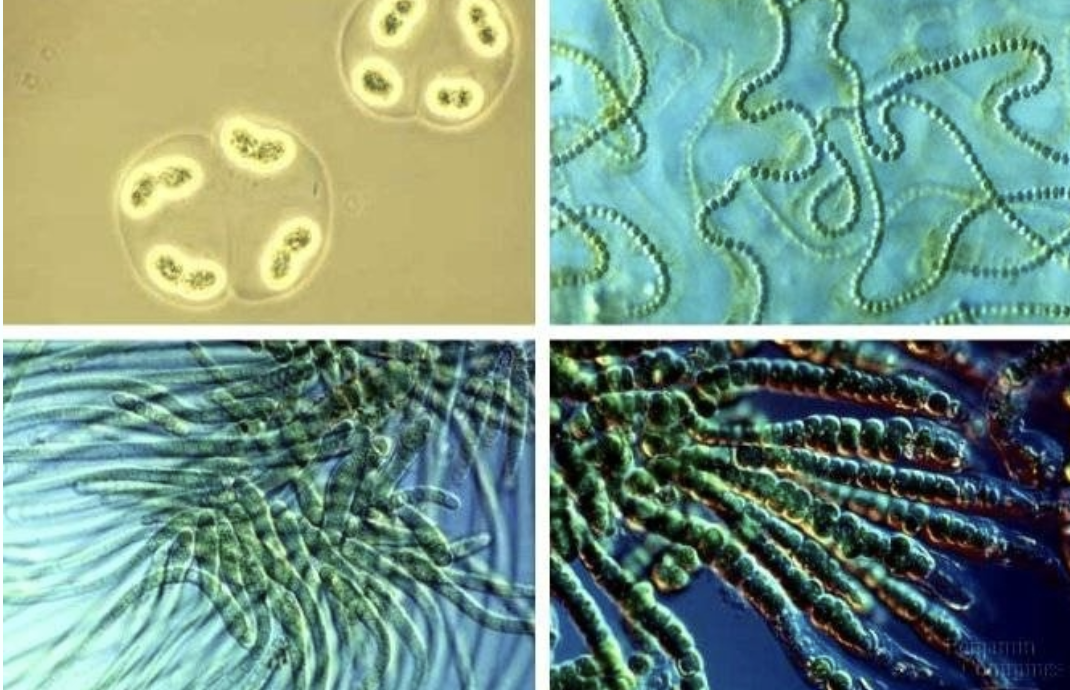
What are these?
Cyanobacteria (prokaryotic). Cyanobacteria are the most basal algae, and the ultimate source of chloroplast evolution.
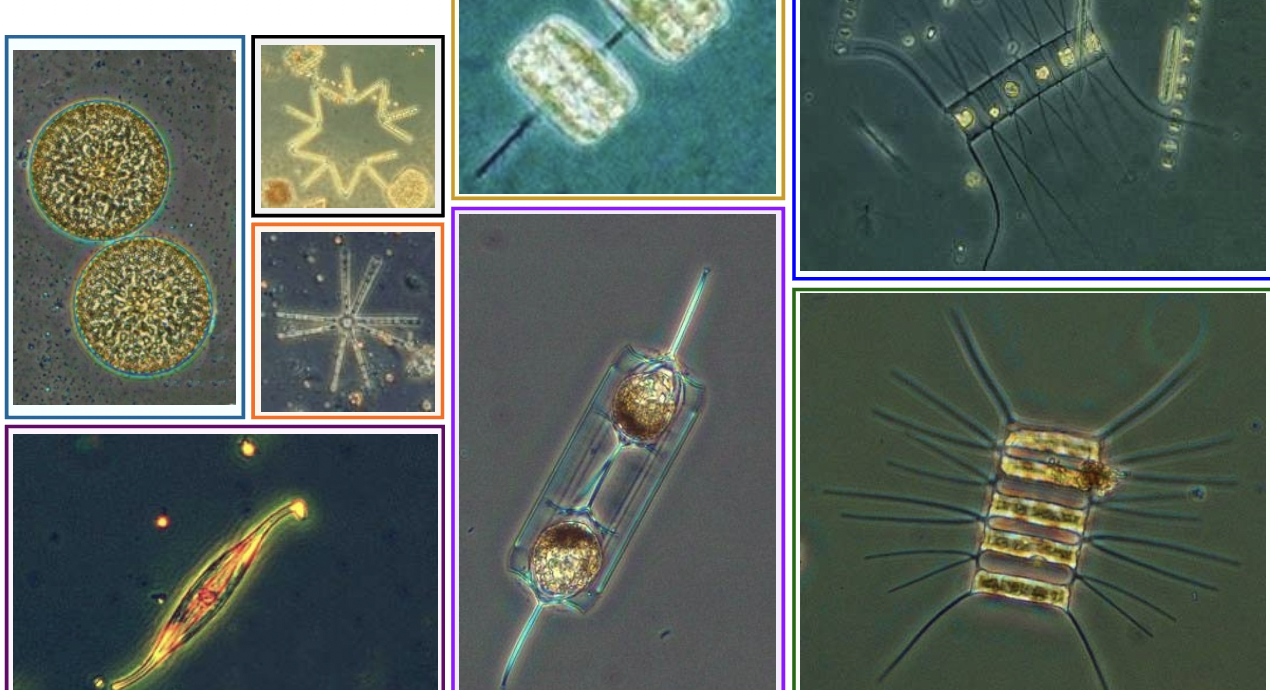
What are these?
Diatoms (eukaryotes). Diatoms have two halves, and silicon in their cell walls (which lasts for centuries)
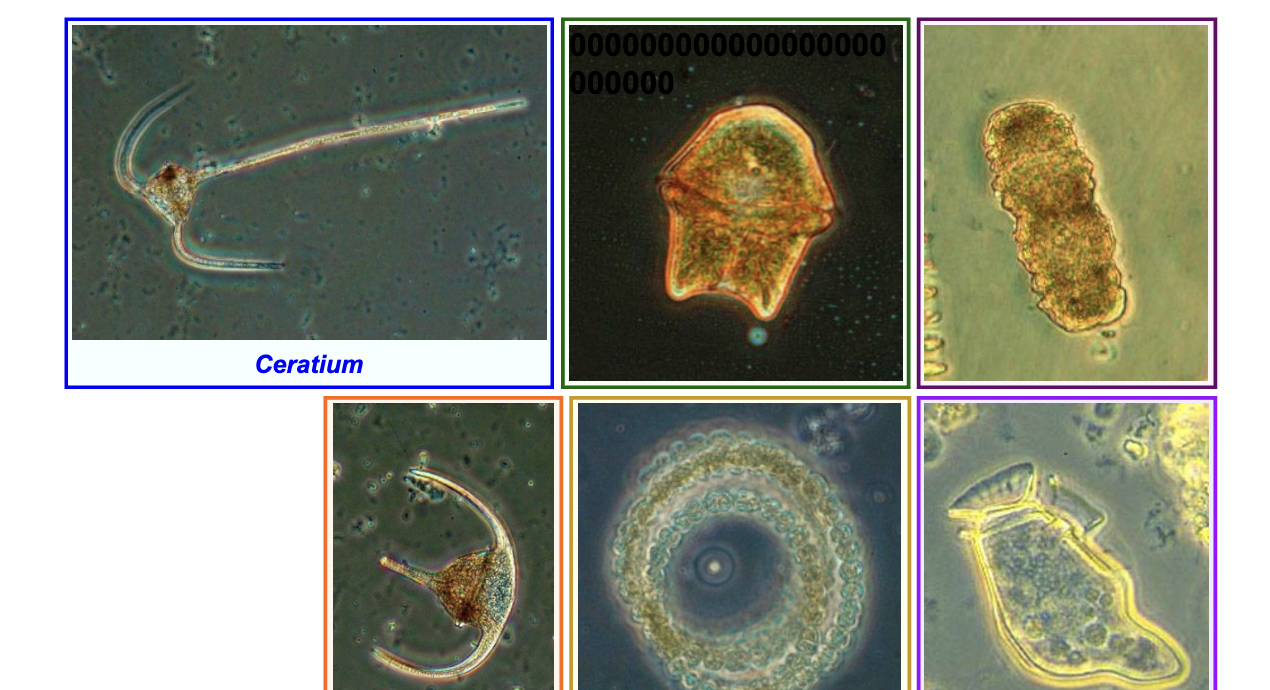
What are these?
Dinoflagellates (eukaryotes). Dinoflagellates are the cause of harmful algal blooms, and often produce neurotoxins.
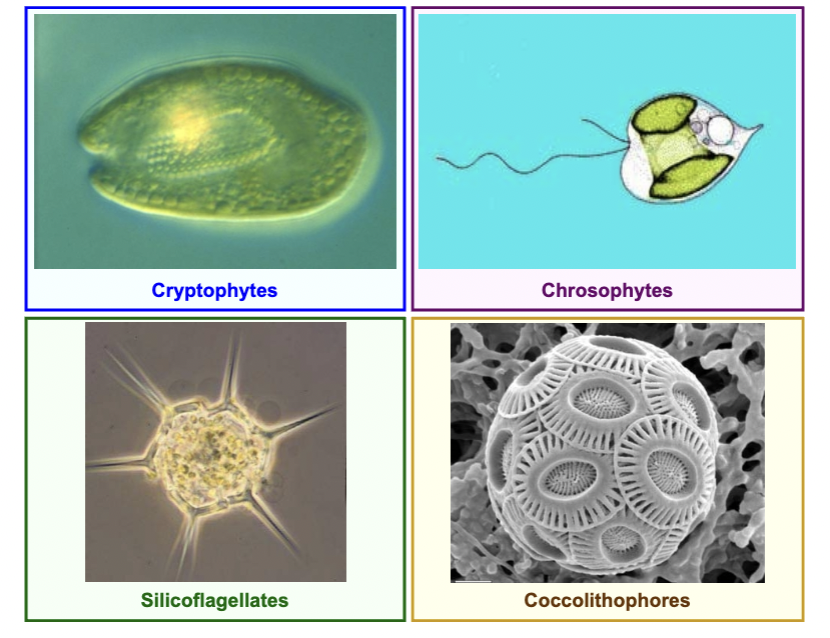
What group do these organisms belong in? Are they eukaryotic or prokaryotic?
Phytoplankton, and they are eukaryotic. Coccolithophores are the cause of marine snow.
Who are the primary producers in aquatic environments?
Algae- photosynthetic bacteria and protists. They don’t have true stems, leaves, or roots.
What kingdom are prokaryotes in? How about eukaryotes?
Prokaryotes: kingdom monera
Eukaryotes: kingdom protista (currently being reorganized)
What are the three overarching groups of macroalgae?
Red, green, and brown.
What are angiosperms?
Submerged aquatic vegetation. Some species lessen coastal erosion, others are invasive. Eg. seagrasses soften wave action and provide breeding grounds.
True or False: Seagrasses are not angiosperms.
False, they are angiosperms.
What natural products can be derived from algae?
Spirulina supplement, brown algae helps form Li-Ion batteries, and sushi nori is made from algae.
What suffix is used at the phylum level?
-phyta
What suffix is used at the class level?
-phyceae
What suffix is used at the order level?
-ales
(I’d like to ORDER some ALES)
What suffix is used at the family level?
-aceae
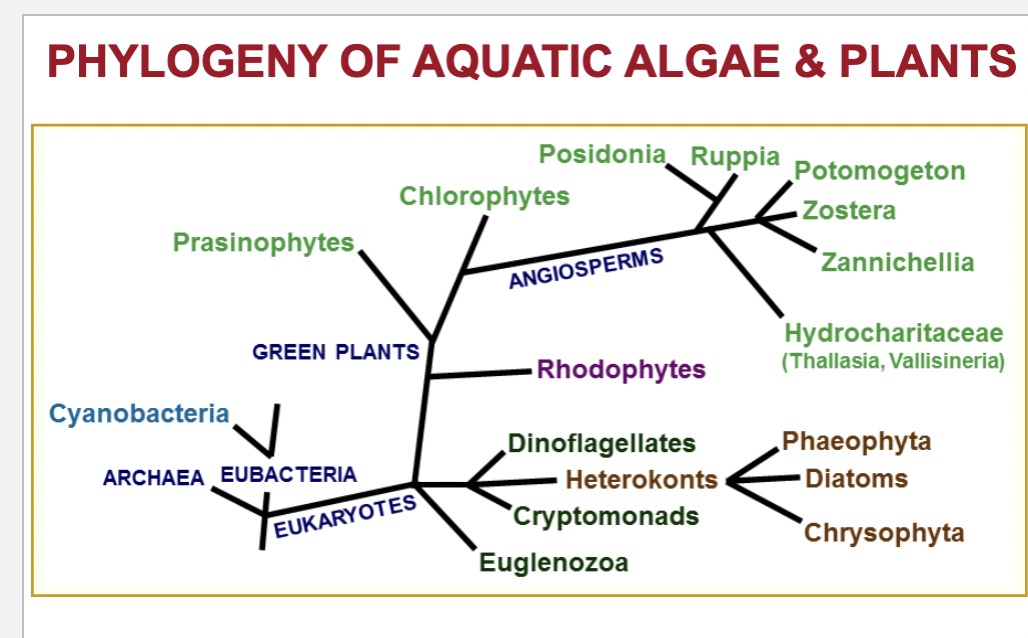
True or False: Given this phylogeny, one can conclude that Eubacteria evolved from Cyanobacteria.
False. Cyanobacteria come from Eubacteria
What is an example of secondary endosymbiosis in photosynthesizers?
Gaining chloroplasts and photosynthetic abilities from eating chloroplasts
What are the most ancient algae?
Rhodophytes, which evolved in the Precambrian period ~3,000 MYA, along with Cyanophyta and Chlorophyta (also 3,000 MYA)
What are the (evolutionarily) youngest algae?
Xanthophyta, which were seen ~1.8 MYA
Does this describe a eukaryotic or prokaryotic cell?
cell wall
plasma membrane
organelles
plastids
mitochondria
nuclei
golgi bodies
flagella
Eukaryotic cell
Does this describe a eukaryotic or prokaryotic cell?
Cell wall same as gram negative bacteria (peptidoglycan layer)
Inner and outer cell membranes
No organelles
No plastids, but yes thylakoids and phycobilisomes
Free DNA
Pilli/gliding for movement
Prokaryotic cell
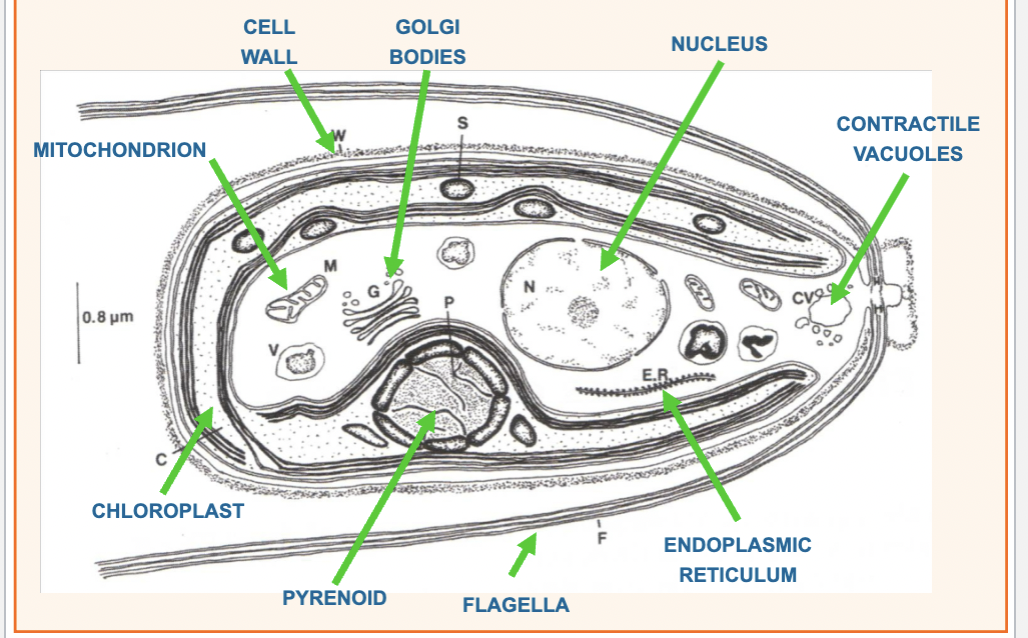
Is this a prokaryotic or eukaryotic cell?
This diagram is of a eukaryotic cell

Is this diagram of a prokaryotic or eukaryotic cell?
It is a diagram of a prokaryotic cell.
If something is photoautotrophic, what is its source of energy for growth? What about its source of C for growth?
Energy for growth is from light
Carbon for growth is from Carbon dioxide
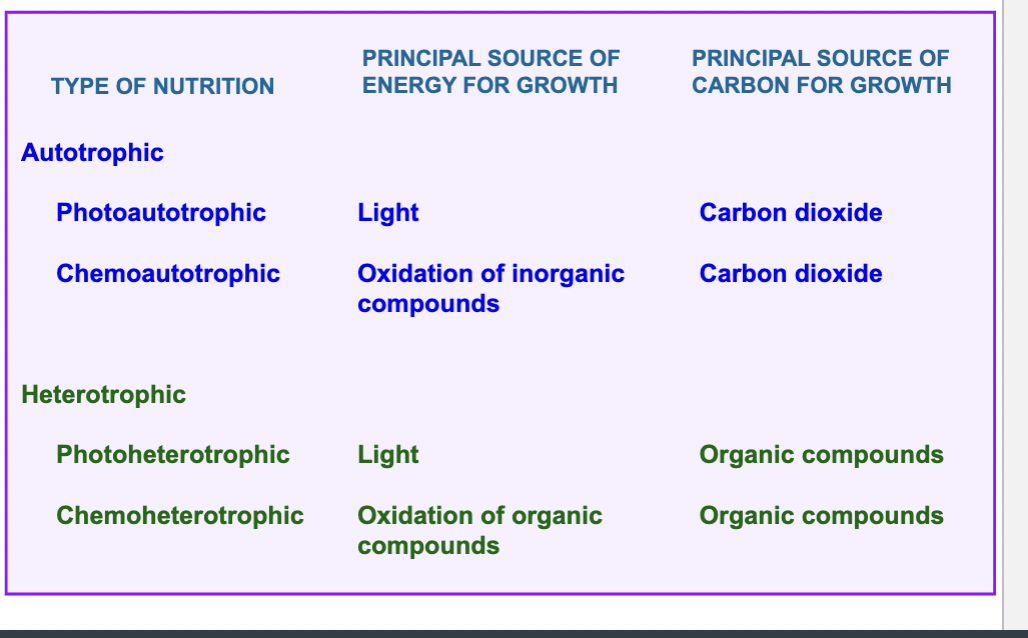
If something is chemoheterotrophic, what is its source of energy for growth? What about its source of C for growth?
Energy for growth is from oxidation of organic compounds
Carbon source for growth is organic compounds
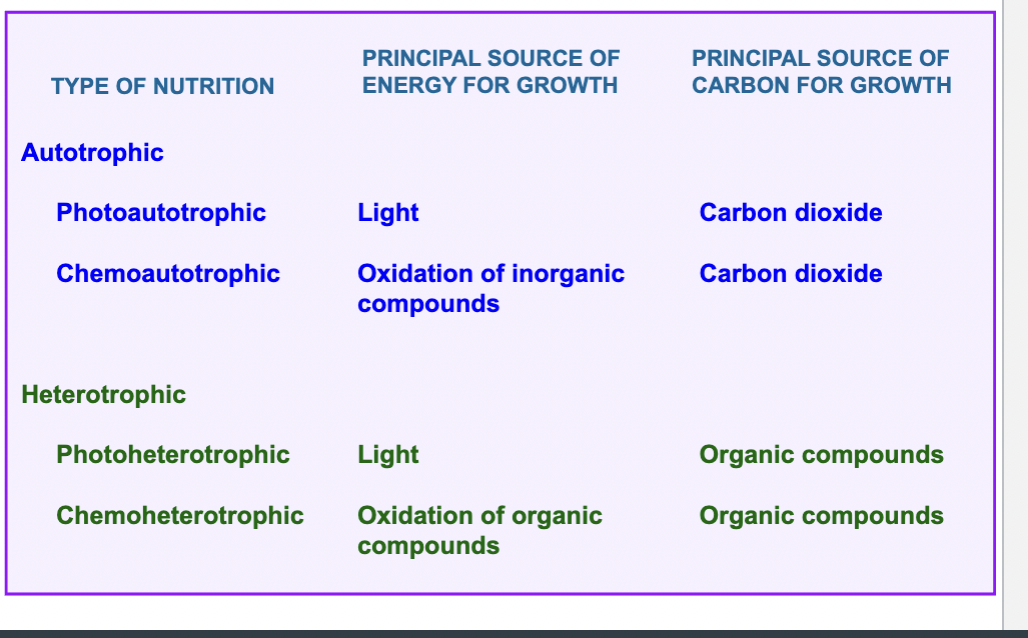
Photosystem II is NON-CYCLIC/CYCLIC phosphorylation and Photosystem I is NON-CYCLIC/CYCLIC phosphorylation.
Photosystem II is non-cyclic, Photosystem I is cyclic
Where does photosynthetic electron transfer occur?
In the thylakoid lumen
True or False: Plastocyanin is water-soluble
True.
What role does plastoquinone play in photosynthesis?
It is neutral, so it picks up H+ on the chloroplast stroma side, H+ is later dropped off on the thylakoid lumen, and that H+ is used by ADP synthase with photophosphorylation
What is the phytol tail?
It is the long, hydrophobic hydrocarbon chain attached to the chlorophyll molecule. This is the part of the molecule that differentiates between chl a, b, c, d, etc.
True or False: Photosynthesizers generally need 2 types of chlorophyll to be effective, one of which is usually Chl b.
(Partially) False. You do need 2 types of cholorophyll, but chlorophyll a is one that is usually present.
What is F0?
It is the incident light on the surface, ie. how much light strikes the surface
If you want to know how far light is traveling in water, what should you measure?
Absorbance (Fa/F0) and/or Scatterance (Fb/F0) … Attenuation is the combination of these two (Fa/F0) + (Fb/F0).
To measure light traveling straight down, find Transmittance (Ft/F0)
What wavelength of light reaches furthest in the ocean? Which is blocked soonest?
Green/blue can penetrate the deepest, but red wavelengths are the shortest
At 1 m of depth, how much light is absorbed?
About 60%
At 10 m of depth, what percent of light has been absorbed?
85%
Why are there sometimes pigments or antennae near Photosystems I and II?
Those pigments drive light in, making photosynthesis faster
What questions does a Photosynthesis-Irradiance curve help answer?
How much photosynthesis is happening? Where is the optimum light level?
Does a green murky lake or a clear-watered lake have more primary production occurring within it?
The murky lake- it is green due to photosynthetic algae
What is an oligotrophic environment?
It is an environment low in nutrients.